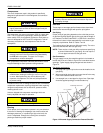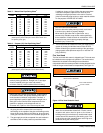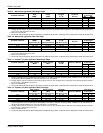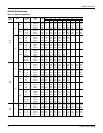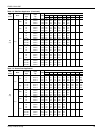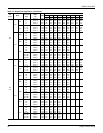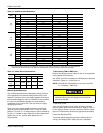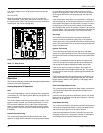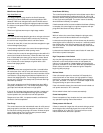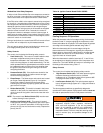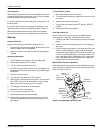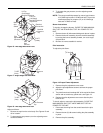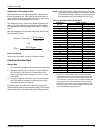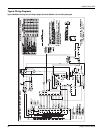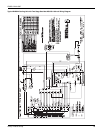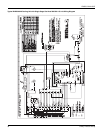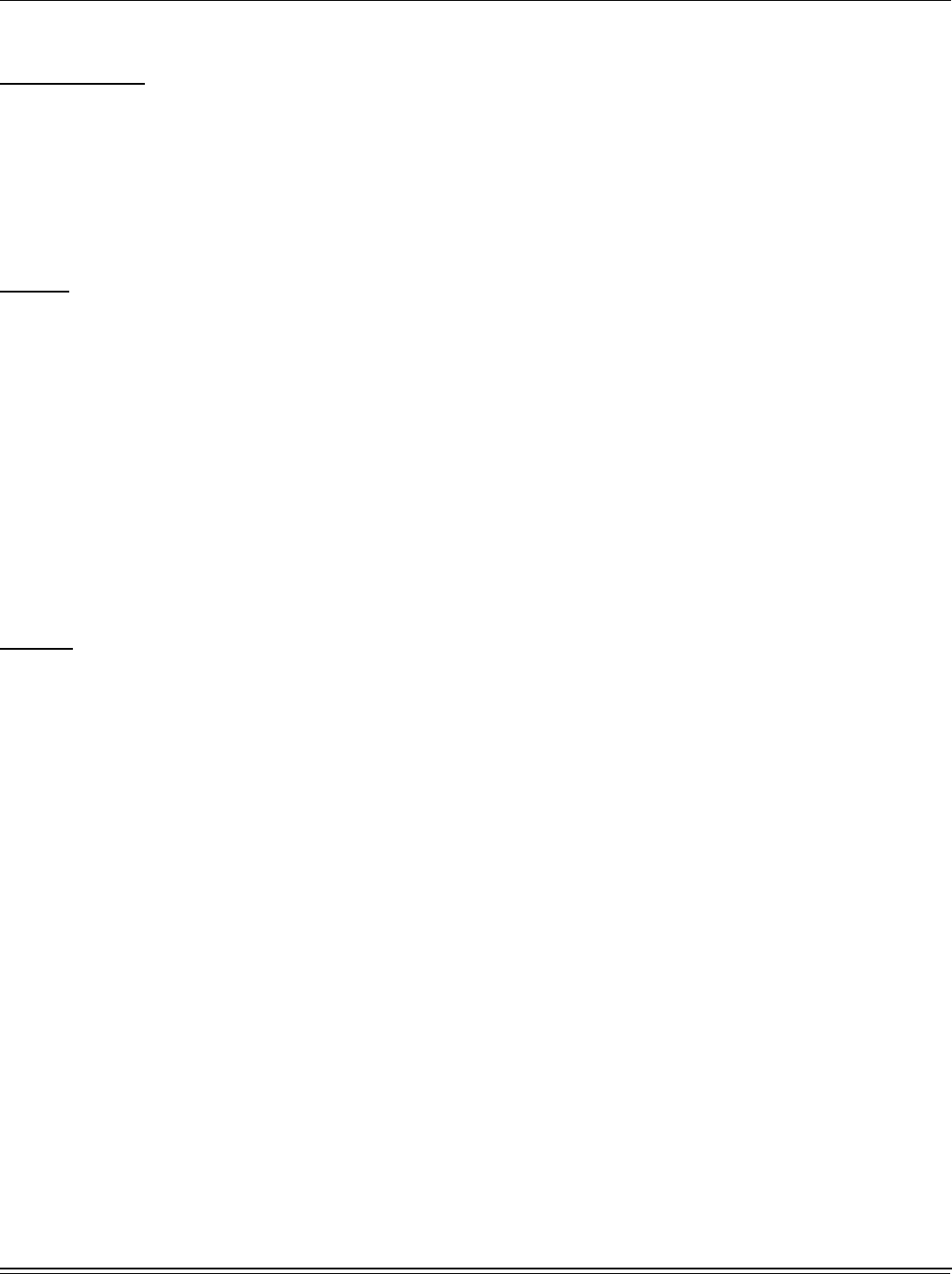
279550-YIM-A-0207
Unitary Products Group 23
Main Burner Operation
High Heat Warm-up
Two stage models run high heat for the first 60 seconds
following Pilot Flame Stabilization period regardless of W2
demand. If W2 is not energized at the end of this 60 second
period the control de energizes the high gas output and steps
the inducer to low speed. If W2 is energized the control remains
on high heat.
There is no high heat warm-up on single stage models.
Low Heat
The control board keeps the pilot gas valve, main gas valve and
induced draft motor energized while continuously monitoring
the call for heat, low pressure switch, and flame status.
If the call for heat (W1) is lost, the control de-energizes the gas
valve and begins post purge.
If low pressure switch opens, the control de-energizes the gas
valve and begins pressure switch proving mode.
If flame is lost, the control de-energizes the gas valve within 2.0
second and counts the flame loss. If flame has been lost more
than 16 times within the same call for heat, the control board
locks out flashing “5” on the LED. If flame has been lost less
than 16 times, the control attempts re-ignition after a 300
second inter-purge period.
High Heat
If the W2 terminal was energized more than 1 second before
W1 at the start of the call for heat, and remains continuously
energized through the call for heat, the control considers it to be
connected to a single stage thermostat and implements a 10
minute Auto staging feature. The 2nd stage thermostat call is
ignored until 10 minutes into steady heat (9 minutes after high
heat warm-up ended).
The control recognizes a call for 2nd stage heat when W2 is
energized (connected to “R”). The control energizes the high
gas output and induced draft motor on high speed.
If the call for 2nd stage heat goes away and the 1st stage call
remains, the control de energizes the high gas valve, drops
inducer speed to low, and returns to low heat operation.
Response to loss of W1, low pressure switch, and flame are
identical to low heat operation.
Post Purge
The control board runs the induced draft motor for a 30 second
post-purge period, and then de-energizes the inducer. If a call
for heat occurs during post-purge, the control finishes the post-
purge, drops inducer out to re-prove open pressure switch
before continuing with the heat cycle.
Heat Blower Off Delay
The control board de-energizes the indoor blower motor after a
delay time as selected by movable shunt (60, 90, 120 or 180
seconds). Blower timing begins when the thermostat is satisfied
or heat cycle was interrupted. The control returns to standby
when the blower off delay is complete.
If the thermostat call for heat returns before the blower off delay
is complete, the control begins an ignition sequence with pre-
purge while the blower off delay continues.
Lockout
While in lockout, the control board keeps the pilot gas valve,
main gas valve and induced draft motor de-energized.
Lockouts due to failed ignition or flame losses may be reset by
removing the call for heat (W1) for more than 1 second, but less
than 20 seconds, or by removing power from the control for
over 0.25 seconds. The control will automatically reset lockout
after 60 minutes.
Lockouts due to detected internal control faults will reset after
60 minutes or power interruption.
High Temperature Limit Switch
Any time the high temperature limit switch is open the control
board will run the indoor blower motor on heat speed, the
inducer (on high speed for 2 stage models), de-energize the
gas valve, and flash “6” on the LED. When the high temperature
switch closes, the control will restart the ignition sequence
beginning with pre-purge.
Rollout Switch
If the rollout switch opens for more than 0.25 seconds, the
control board will run the inducer (on high speed for 2 stage
models) for a post-purge period, immediately de-energize the
gas valve, and flash “7” on the LED. The blower output will be
energized during an open rollout condition.
If the rollout switch closes, the control shall remain locked out
until power removed or “W” is removed.
Rollout switch lockout shall not reset automatically.
Power Interruptions
Power interruptions of any duration shall not cause lockout or
any operation requiring manual intervention.
Flame present with Gas off
If flame is sensed for longer than 4.0 seconds during a period
when the gas valve should be closed, the control will enter
lockout flashing “8” on the LED. The control will turn on the
inducer blower while the flame is present.



